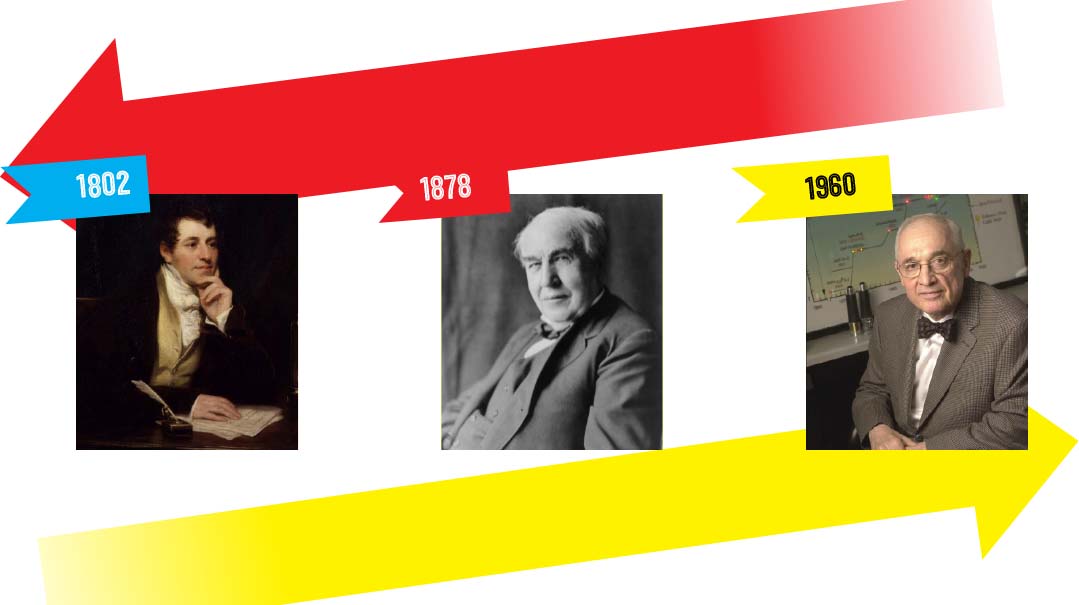Lightbulbs

Read on for some cool info about the lightbulbs

It’s a bit dark in the room, so you jump up and flip on the switch. Voila! Light! Um, how did that happen? Was there electricity involved? What about the lightbulb? Read on for some cool info about the lightbulbs.
BYGONES
1802
Stay in the dark no longer. Humphry Davy, an English chemist and inventor, produced the world’s first electric lamp by connecting charged piles to charcoal electrodes. It was known as an electric arc lamp, but it wasn’t a very practical source of lighting. It burned out really quickly and was actually much too bright.
1878
Lots of inventors were using their limited knowledge to produce a light bulb that would actually be useful. And finally, in 1878, after lots of failed experiments and trials, Thomas Alva Edison nailed it! And he learned that a carbonized bamboo filament would light and stay lit for 1,200 hours. And so, his company was born: The Edison Electric Light Company. Now he could start selling usable and affordable incandescent light bulbs.
1960
The invention of the LED bulb was actually an accident. Some mistakes turn out good! Nick Holonyak, an America scientist at General Electric, was trying to create a laser and somehow ended up with a red LED light. He used the concept that semi-conductors glow when an electrical current is applied to them — something that was widely known — and patented it for use as a light fixture.
HERE & NOW
Just ten percent of an incandescent light bulb’s energy produces light. The remaining 90 percent produces heat.
The average working lifespan of the incandescent bulb used in the home is 1,000 hours. An LED light, however, can last up to 25,000 hours or more.
In 2004, LED wallpaper was invented, which has lights built into the paper for decorative effect.
UP & COMING
2022
Never mind getting out of bed to turn off the light when you’re finished reading. Just talk to the light — and it will do your bidding. It will dim itself, turn itself on or off, and even change colors for you. And don’t worry that the wrong light will hear, ‘cuz they each have their own name — chosen by you, of course.
And no more changing light bulbs. I mean, maybe once in 40 years or so. Thanks to Jake Dyson, we’ll now have special LED bulbs that use very concentrated heat and energy, allowing them to burn for 40 years. And more. It’s just that after 40 years, the bulb will only emit 70 percent of its brightness.
(Originally featured in Mishpacha Jr., Issue 883)
Oops! We could not locate your form.


